-
How diabetes affects your foot
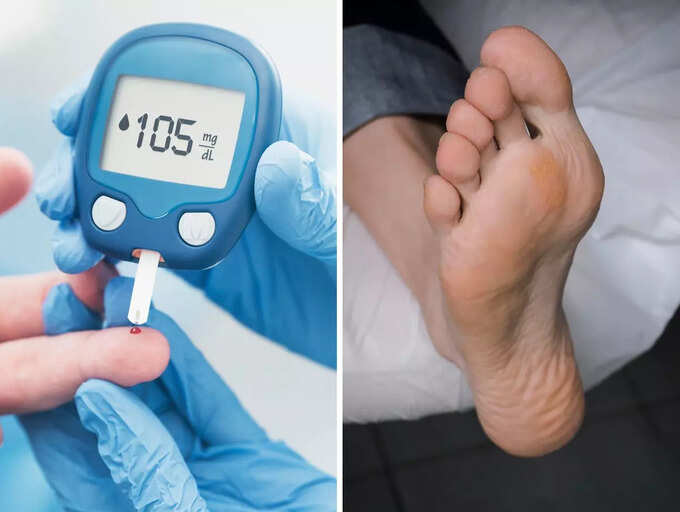
Diabetes is a chronic illness that affects how your body processes and uses glucose from the food you eat. It either occurs when the pancreas are unable to produce enough insulin or when the body cannot effectively utilize the insulin it produces.
Different types of diabetes can affect the body including Type 1, Type 2 diabetes, prediabetes and gestational diabetes. However, they all share the common problem of having too much glucose in the bloodstream. It is therefore recommended to get the blood sugar level tested regularly so that the disease is checked before it progresses to something serious.
According to the US Centers for Disease Control and Prevention (CDC), some of the common symptoms of diabetes include frequent thirst and urination, unexplained weight loss, blurry vision, numbness or tingling in the hands and feet, fatigue and dry skin.
Having said that, diabetes can also cause two types of problems in the foot namely diabetic neuropathy and peripheral vascular disease.
In diabetic neuropathy, uncontrolled diabetes can affect and damage your nerves, whereas peripheral vascular disease also affects the flow of blood, leading to several symptoms that arise in the feet itself.
-
What causes diabetic neuropathy?

While there is known cause of diabetic neuropathy, researchers believe uncontrolled blood sugar levels can negative impact and damage the nerves, interfering with their ability to send signals, as per the Mayo Clinic. It is also said that high blood sugar levels can also damage the blood vessels, making it difficult for the oxygen and nutrients to pass efficiently.
Furthermore, there are certain factors that can put you at a greater risk of this condition. According to the Mayo Clinic, poor blood sugar control, a history of diabetes, being overweight and smoking can increase your risk of diabetic neuropathy.
-
Pain, tingling and numbness in legs and feet
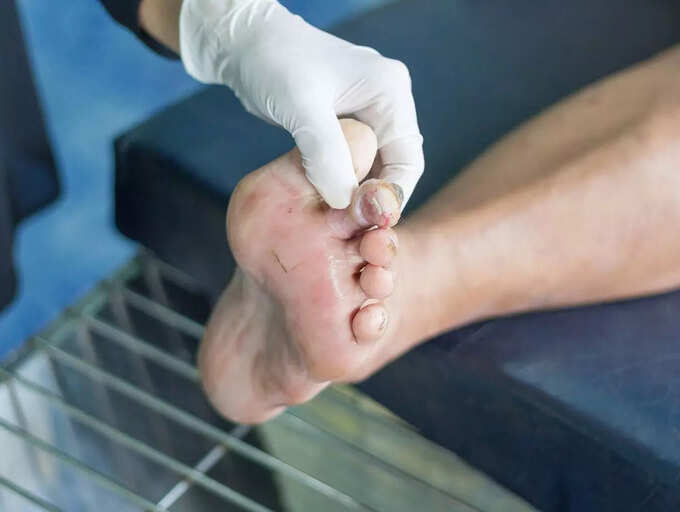
Diabetic neuropathy is a type of nerve damage that can occur in people with diabetes. According to the Mayo Clinic, diabetic neuropathy most often damages nerves in the legs and feet, which is why symptoms include pain and numbness in the legs, feet and hands. Furthermore, it can cause problems with the digestive system, urinary tract, blood vessels and heart. While some people only suffer with mild symptoms, there are those whose symptoms can be quite painful and debilitating.
-
Foot ulcers
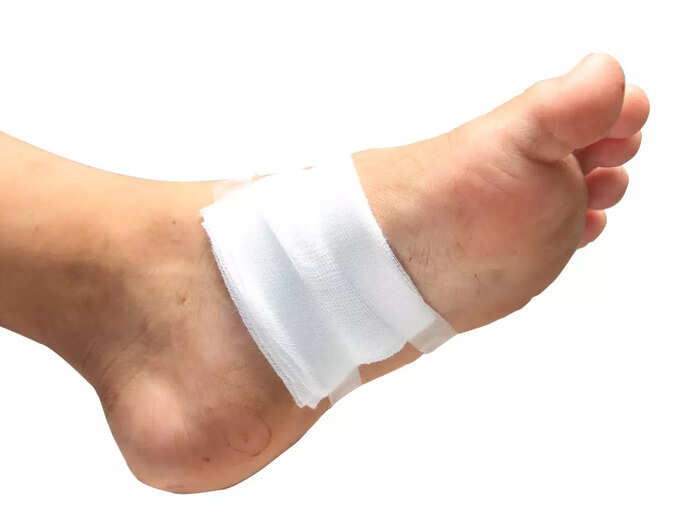
Generally, a foot ulcer is characterized by a break in the skin or a deep sore.
A diabetic foot ulcer is an open wound that is prevalent in approximately 15 percent of patients with diabetes, and is primarily found on the bottom of the foot. In mild cases, foot ulcers can cause the skin to wear off, however, in severe cases, it can lead to amputation. According to experts, the key is to reduce your risk of diabetes from early on.
If you already have a diabetic foot ulcer the primary goal should be to prevent an infection. What you can do is to take off the pressure from the area, remove the dead skin and tissues, apply appropriate medication and get a dressing if needed and most importantly, manage your blood sugar levels. Avoid walking barefoot with an ulcer and clean the wound daily.
-
Athlete's foot
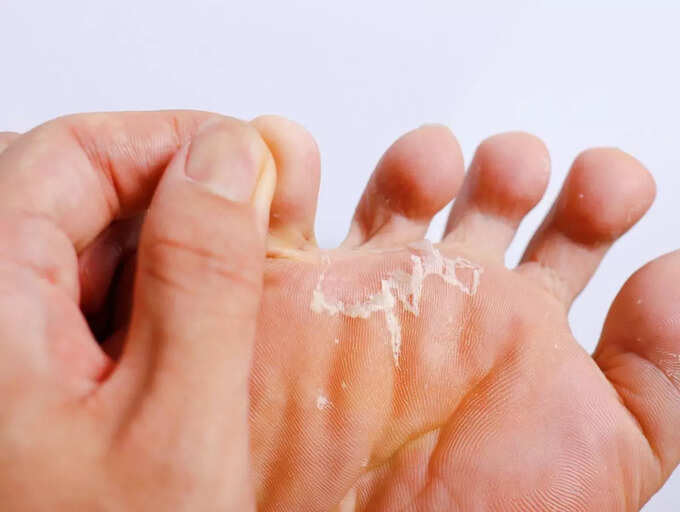
Nerve damage due to diabetes can also increase one's chances of developing foot complications including athlete's foot.
Athlete's foot is a fungal infection that leads to itching, redness, and cracking. It can affect one or both feet and will likely require medications that eliminate the fungus causing the infection.
According to the Mayo Clinic, athlete's foot can be contagious and may spread through contaminated floors, towels or clothing. It is also associated with other fungal infections such as ringworm and jock itch and can be treated with antifungal medications.
-
Corns or calluses
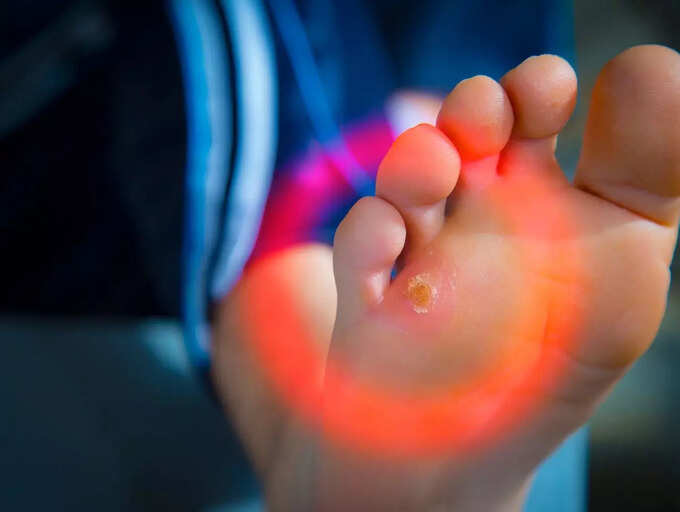
Diabetes can also cause corns and calluses.
While a corn is a buildup of hard skin near a bony area of a toe or between toes, a callus is the buildup of hard skin on the underside of the foot, as per the WebMD.
Calluses are usually caused by poorly fitting shoes or by a skin issue, whereas corns are an outcome of pressure from shoes that rub against your toes or cause friction between your toes.
-
Fungal infection of nails
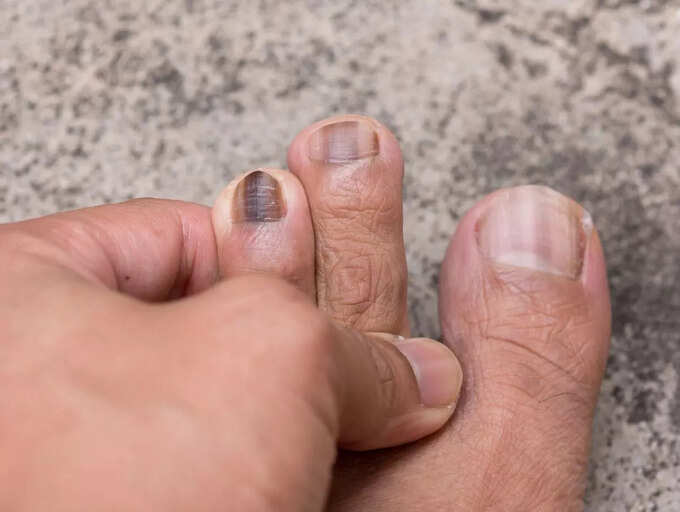
People with diabetes are also at an increased risk of a fungal infection called onychomycosis, which usually affects the toenails. This leads to discoloured (yellowish-brown or opaque), thick, and brittle nails. While in some cases the nail can separate itself from other nails, in other instances, the nail may crumble. Fungal infection in the nail can also occur from an injury.
Fungal nail infections can also be an outcome of psoriasis, poor blood circulation in the fingers and toes, suppressed or poor immune system or those with poor health.
-
Gangrene
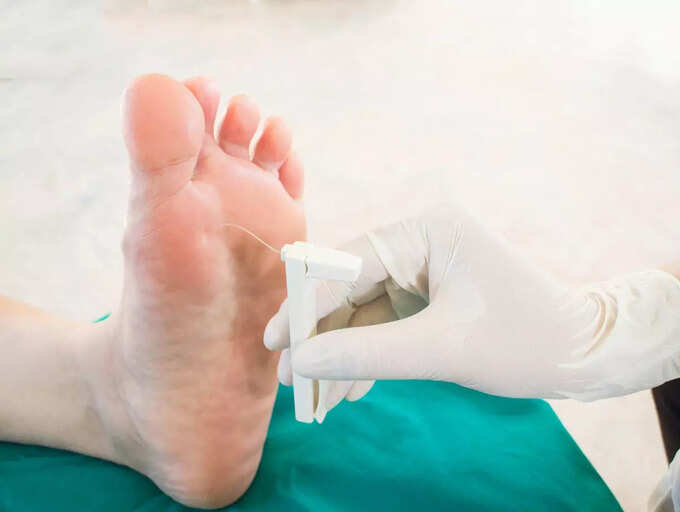
Because diabetes affects the blood vessels that supply your fingers and toes with blood and oxygen, it can lead to gangrene. Gangrene occurs when the blood flow is cut off and tissue dies off. This may even increase the chances of an amputation.
-
Foot deformities
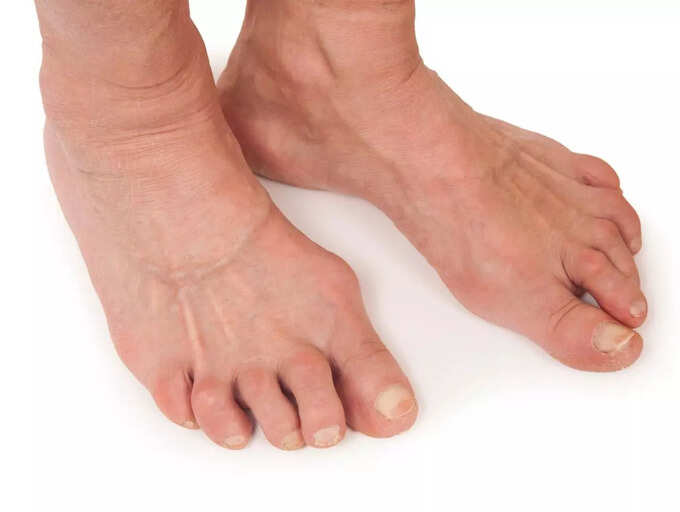
Given that diabetes can cause nerve damage, it can also weaken the muscles in the feet and lead to problems like hammertoes, claw feet, prominent metatarsal heads, and pes cavus, which is a high arch that won’t settle down even when you put some weight on it.
That said, check your feet every day for sores, blisters, redness, calluses, or any other problems. Always wear a well-fitted shoe, that gives enough room for your foot to walk comfortably with foot deformity. Protect your feet from heat or cold and keep blood flowing to your feet. Do not restrict it to one position. Even when you're sitting, keep wiggling your toes.
-
Main causes of diabetes

In a healthy body, pancreas releases insulin to help the body store and use sugar from the food eaten. Diabetes happens when the pancreas doesn't make any insulin, the pancreas makes very little insulin or the body doesn’t respond the way it should to insulin.
Unlike people with type 1 diabetes, people with type 2 diabetes make insulin. However, the insulin their pancreas releases isn’t enough, or their body is unable to use it properly.
-
Manage your blood sugar levels
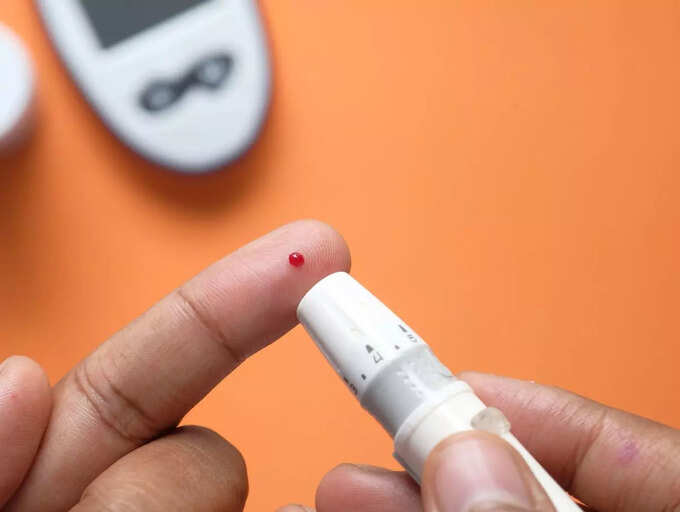
If you are diabetic, it is crucial that you keep a tab of your blood sugar levels and manage it well. According to the US Centers for Disease Control and Prevention (CDC), you can use a blood sugar meter (also called a glucometer) or a continuous glucose monitor (CGM) to check your blood sugar.
Make a strict note of your diet, be physically active and take your medications on time as directed by the doctor. Do not compromise with your routine at all costs.
-
What foods to eat?

Diet plays a significant role in regulating your blood sugar levels. There's more that you need to limit than eat, which is why diabetes is a complicated health condition.
However, to keep your blood sugar levels in check, you can add certain foods to your meals. Vegetables such as lettuce, kale, spincach, collards, green peas, cabbage and tomatoes, fruits including apples, pears, plum, avocado, peaches, strawberries and oranges are extremely beneficial.
You should also include whole or minimally processed grains such as barley, oat bran, sourdough bread, etc.. If you're a dairy fan, you can have plain yogurt, cheese, milk or soy milk.
-
Important points to know

Diabetes is a silent killer. It can grow within the body without giving any glaring symptoms. The subtle signs of diabetes are often overlooked as a result of which by the time it it detected it causes an irreversible change in the body.
In order to keep serious diseases like diabetes under check, we need to go for regular medical checkups. Timely medical checkups will give you an idea of the disease.
One should also keep an eye on the symptoms of the disease. Any small change in the body should not be taken lightly and should be dealt with doctor's recommendation.